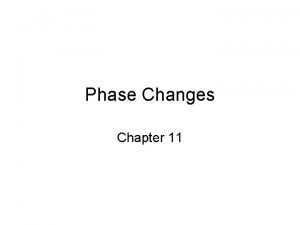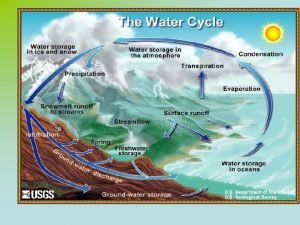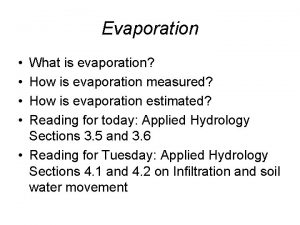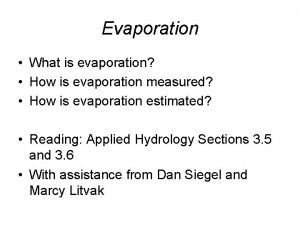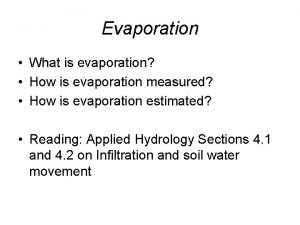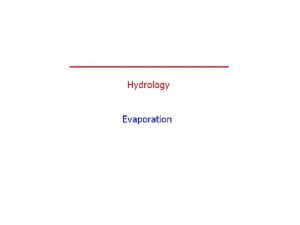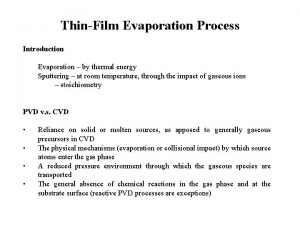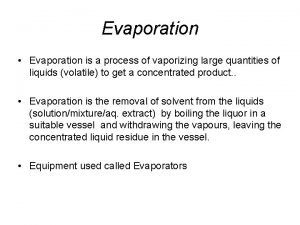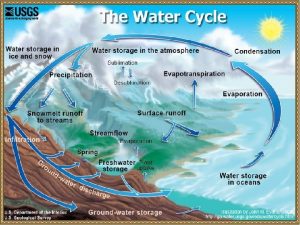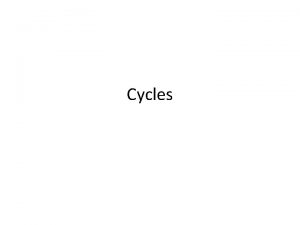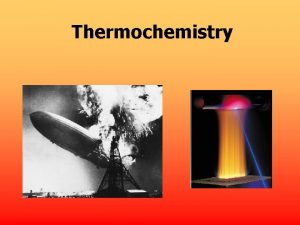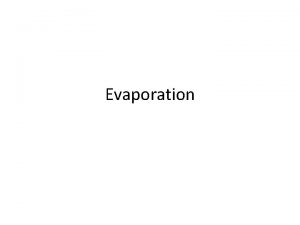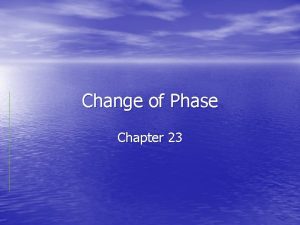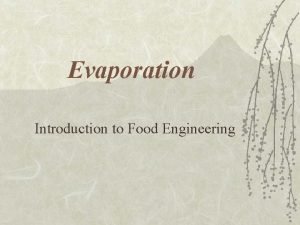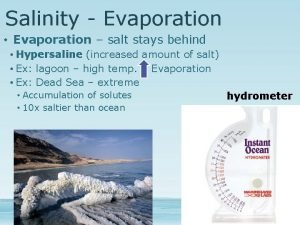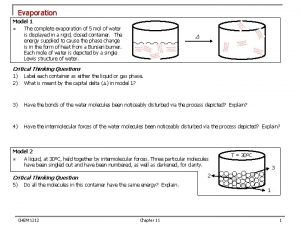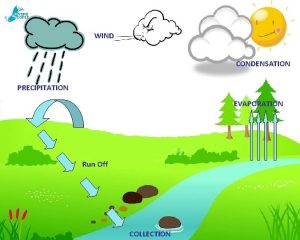Evaporation Evaporation the process in which water changes





















- Slides: 21

Evaporation

Evaporation • the process in which water changes phase from liquid to vapor and is transported from the Earth’s surface to the atmosphere • We will use the following distinctions – transpiration (T): through plants – evaporation (E): from soil, the exterior surfaces of plants, or surface water bodies – evapotranspiration (ET): ET = E + T

Necessary conditions for evaporation • A supply of heat – latent heat of vaporization: the energy input required to overcome the molecular forces of attraction between water molecules in liquid form – 2. 5 x 106 J kg-1 at 15 C • the joule (J) is the SI unit of energy (kg m 2 s-2) • 4. 18 J = 1 calorie – heat can come from external sources or can be withdrawn from the body undergoing evaporation

Necessary conditions for evaporation • A vapor pressure gradient – vapor pressure of the atmosphere < vapor pressure of the evaporating surface – this gradient drives transport of water by diffusion – transport by convection (bulk air flow) is also important

Necessary conditions for evaporation • A supply of water – sufficient water transport from or through the interior of the body to the site of evaporation • Thus evaporation can be limited by either – the evaporative demand: the supply of heat and the transport of vapor away from the surface – the soil: its ability to transport water to the surface

Evaporation from a water table • the greater the capillary rise the greater the potential for evaporation from the water table • shallow water tables are major contributors to the problem of soil salinization




Steady evaporation from a water table • assume evaporation is occurring but no change in soil water content • steady-state flow • apply Buckingham-Darcy Law

Reading assignment • Evaporation, p. 337 -351

Evaporation in the absence of a water table • Three stages – First, constant-rate stage – Second, falling rate stage – Third, slow-rate stage







Reducing evaporation • During first or constant rate stage – Reduce the evaporative demand – Maintain soil cover – Reduce irrigation frequency • During second or falling rate stage – Decrease the hydraulic conductivity rapidly – “Dust mulch” was advocated in the early 1900’s • These management practices usually involve tradeoffs and should be carefully evalutated.

How much water is lost to evaporation? Water lost during fallow periods as a percentage of total evapotranspiration of the crop rotation. Data cover 15 months (2009 -2010) at Lahoma, OK. (Patrignani et al. , 2010, OWRRI poster). Abbreviations: • Conventional tillage (CT) • No-till (NT) • Wheat-double crop sunflower-grain sorghum (W/DC SF-GS) • Wheat-double crop grain sorghumsoybean(W/DC GS-SB) • Wheat-double crop soybean-corn (W/DC SB-CN)

Reading assignment • Plant uptake of soil moisture, p. 365 -378
 Water and water and water water
Water and water and water water Changes in latitudes, changes in attitudes meaning
Changes in latitudes, changes in attitudes meaning Chemical changes examples
Chemical changes examples Is vaporization endothermic or exothermic
Is vaporization endothermic or exothermic Water
Water Transpirasi yaitu penguapan air
Transpirasi yaitu penguapan air Evaporation water cycle
Evaporation water cycle Evaporation from plants is called
Evaporation from plants is called Hình ảnh bộ gõ cơ thể búng tay
Hình ảnh bộ gõ cơ thể búng tay Bổ thể
Bổ thể Tỉ lệ cơ thể trẻ em
Tỉ lệ cơ thể trẻ em Gấu đi như thế nào
Gấu đi như thế nào Tư thế worm breton
Tư thế worm breton Bài hát chúa yêu trần thế alleluia
Bài hát chúa yêu trần thế alleluia Các môn thể thao bắt đầu bằng tiếng chạy
Các môn thể thao bắt đầu bằng tiếng chạy Thế nào là hệ số cao nhất
Thế nào là hệ số cao nhất Các châu lục và đại dương trên thế giới
Các châu lục và đại dương trên thế giới Công thức tính thế năng
Công thức tính thế năng Trời xanh đây là của chúng ta thể thơ
Trời xanh đây là của chúng ta thể thơ Mật thư anh em như thể tay chân
Mật thư anh em như thể tay chân Phép trừ bù
Phép trừ bù



